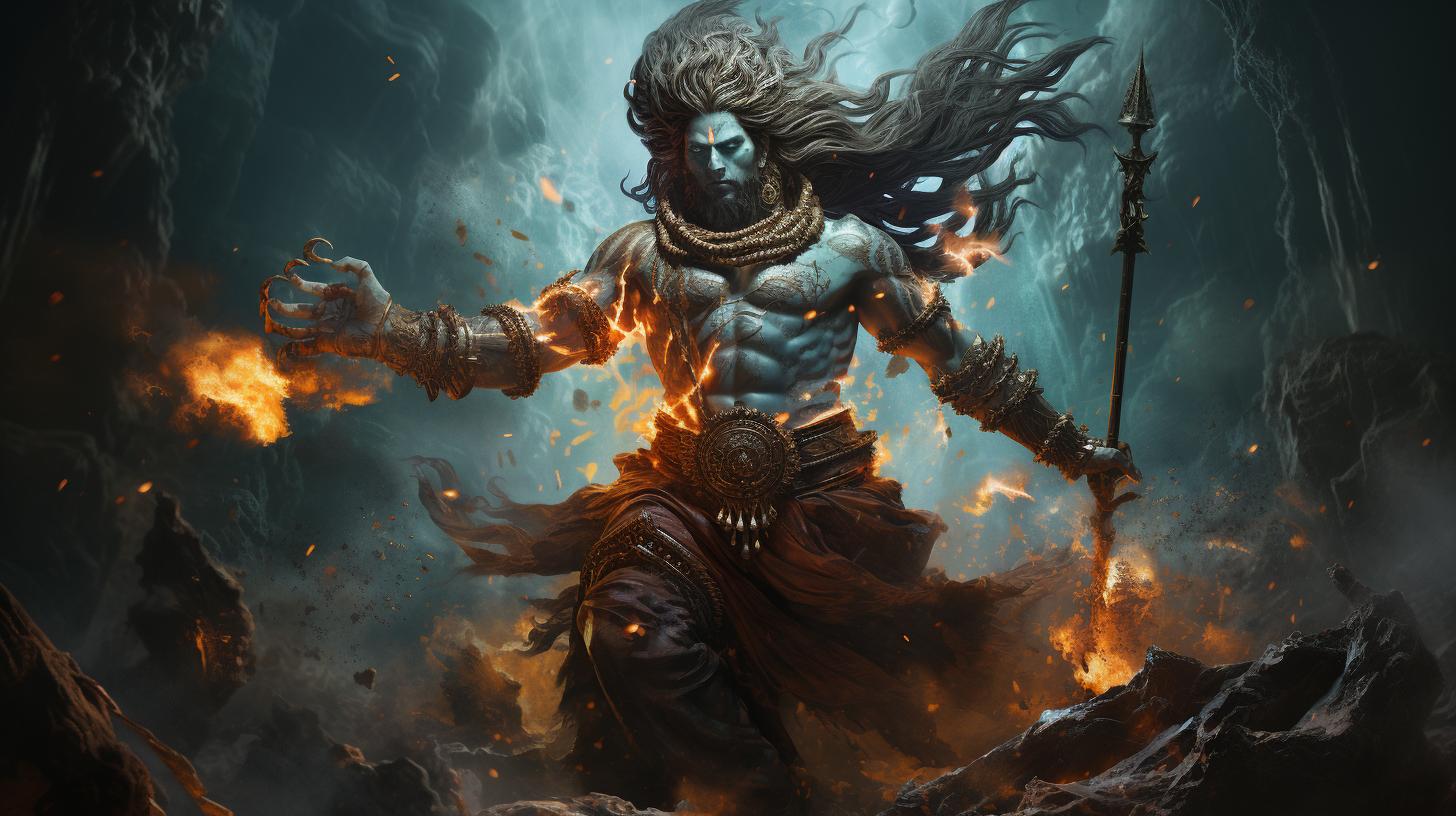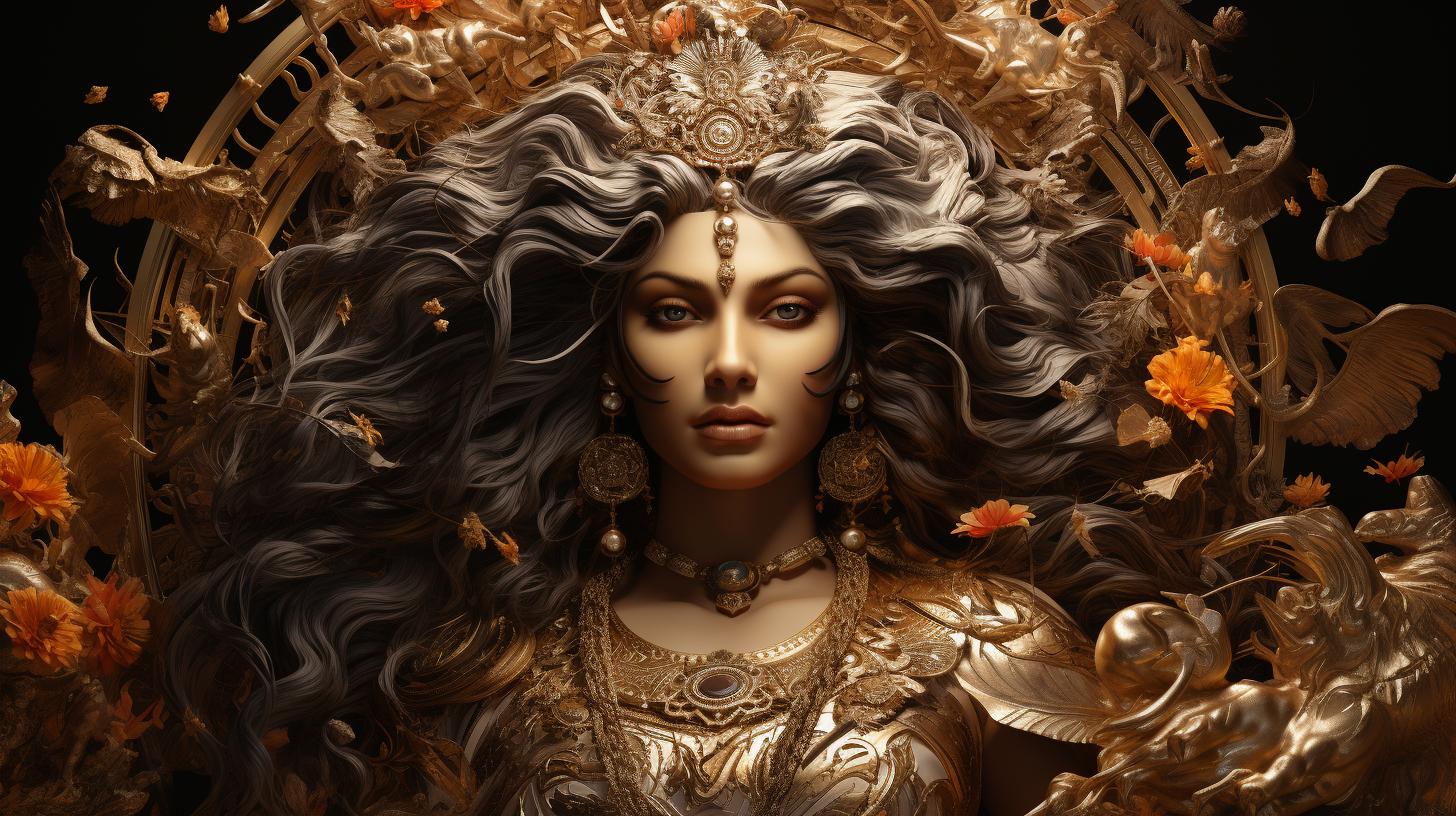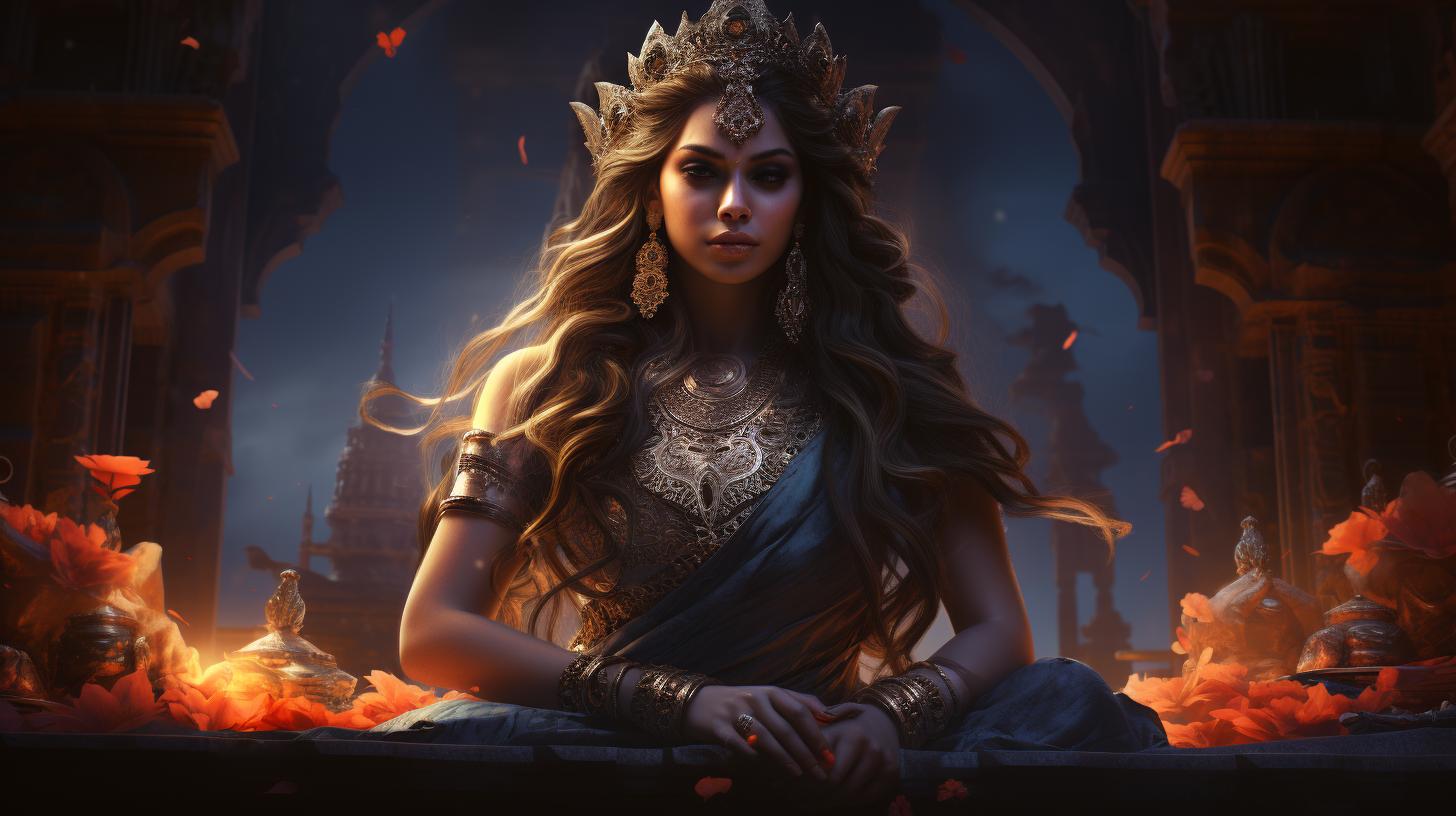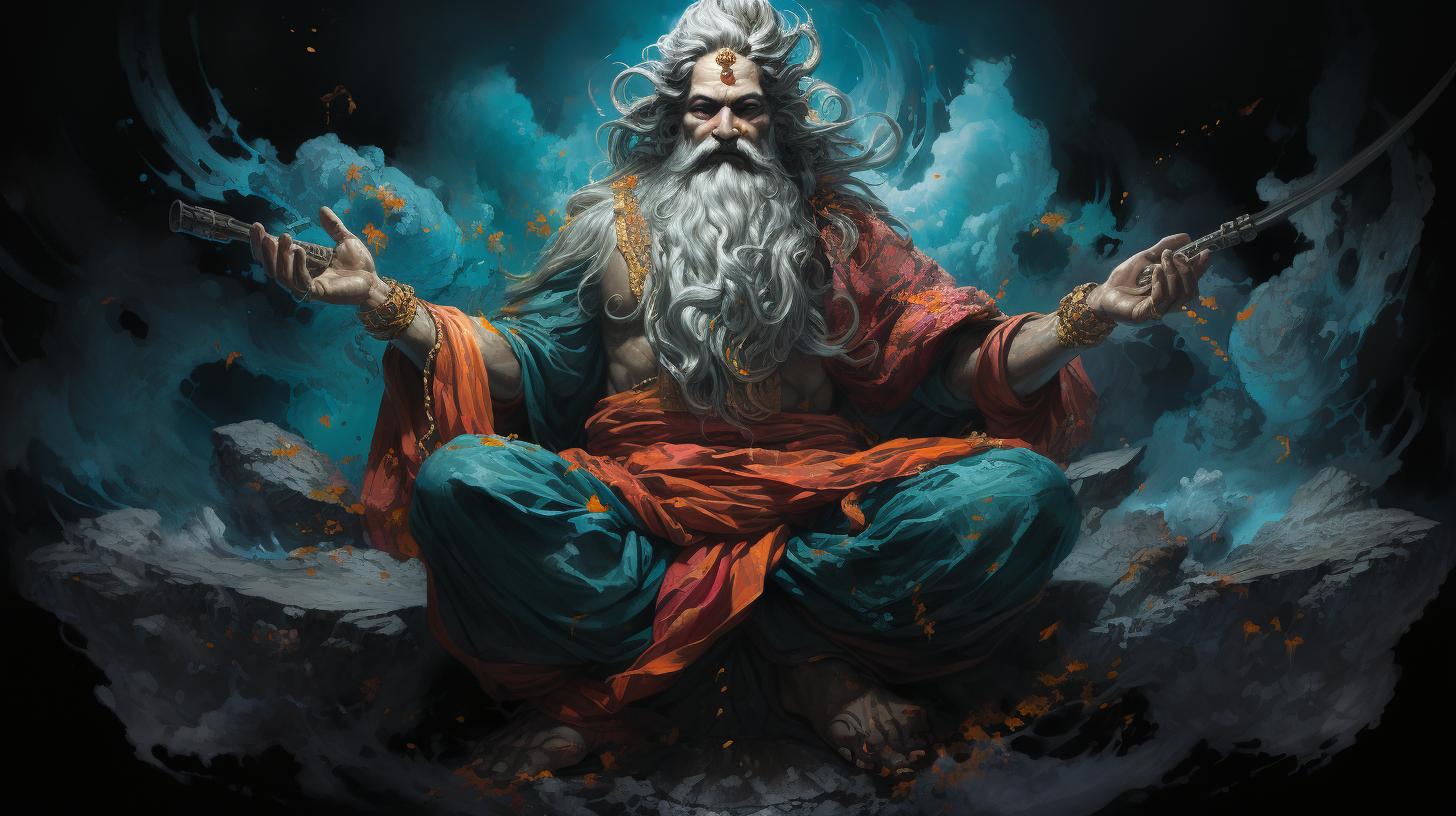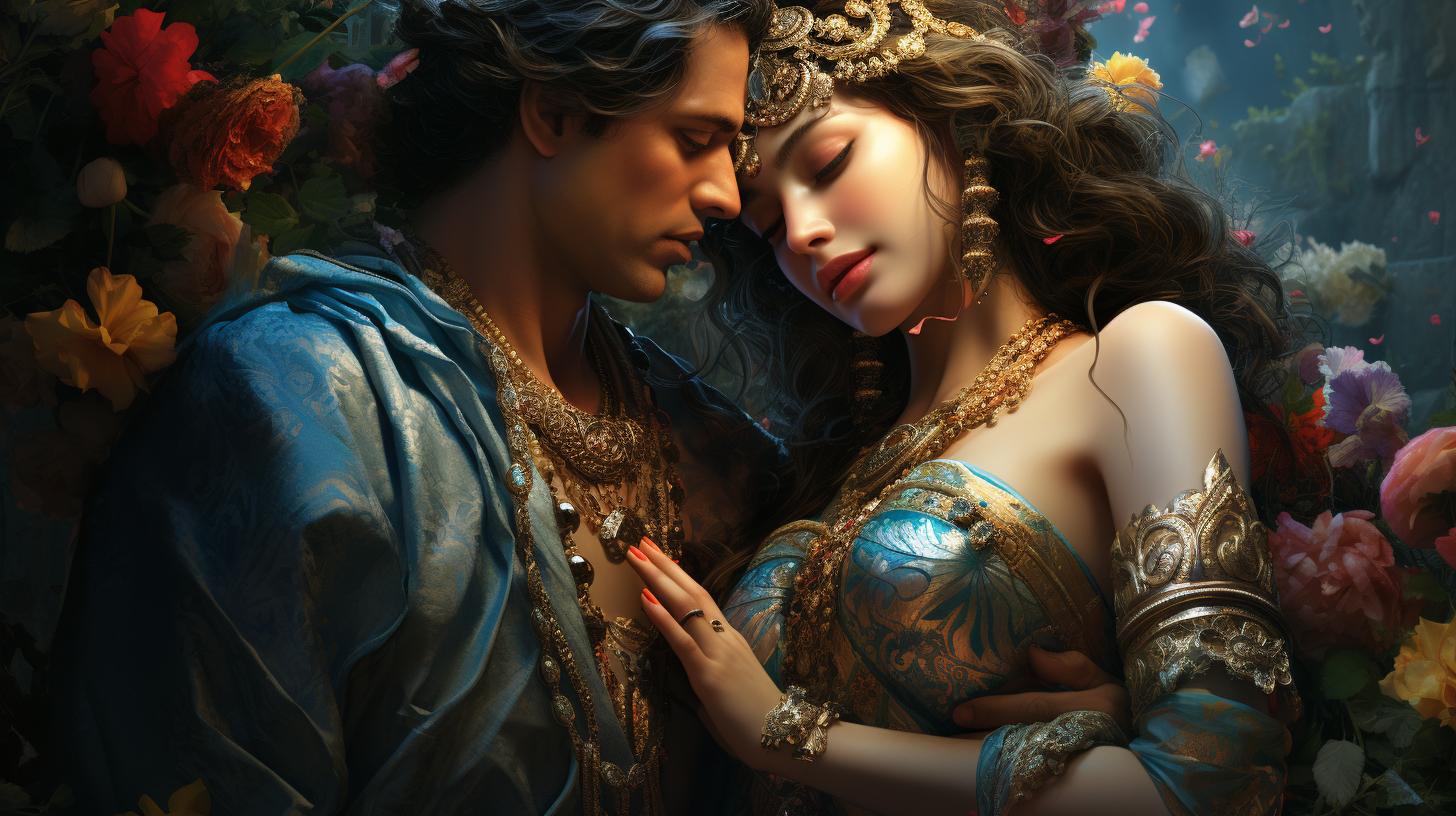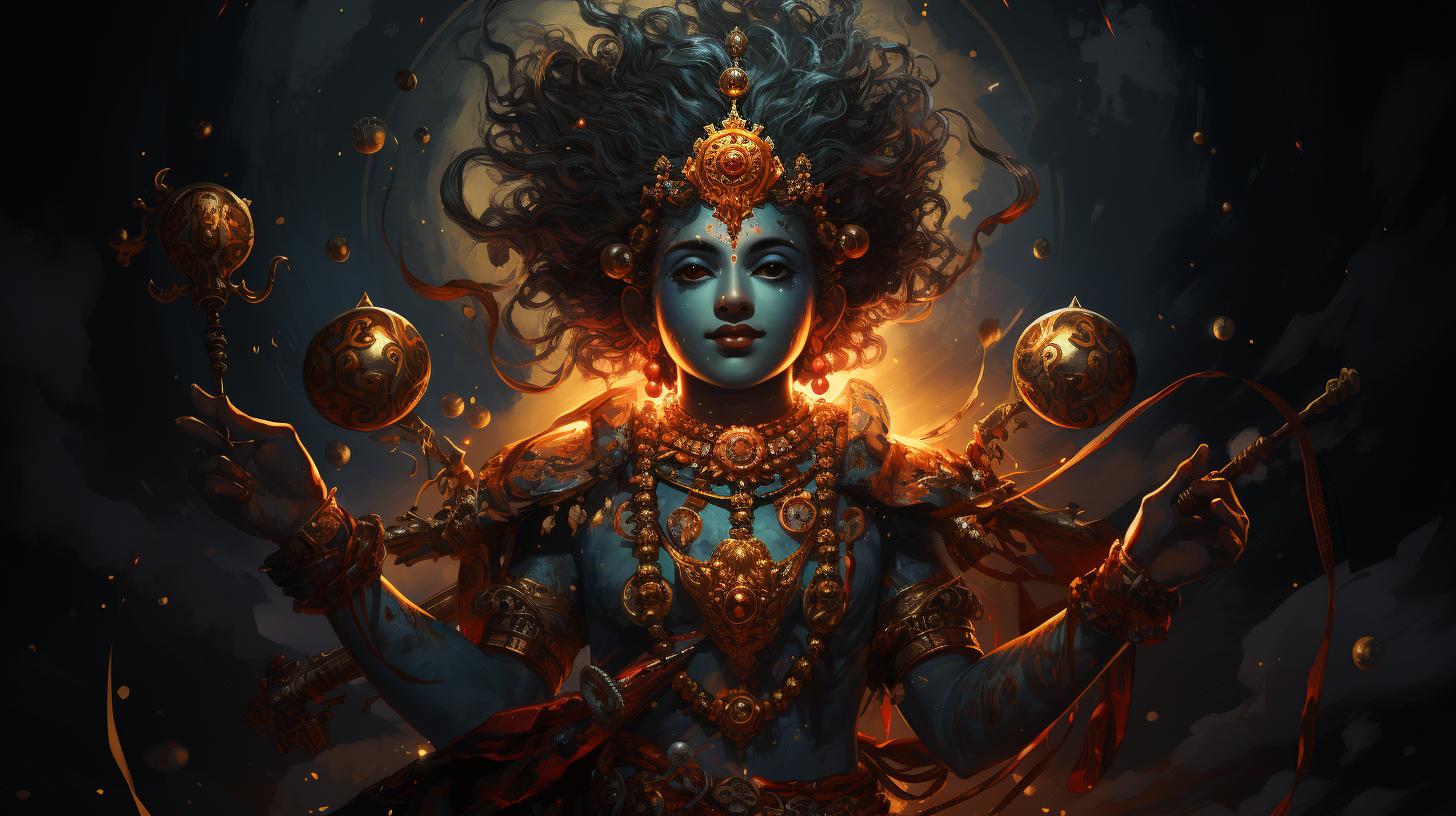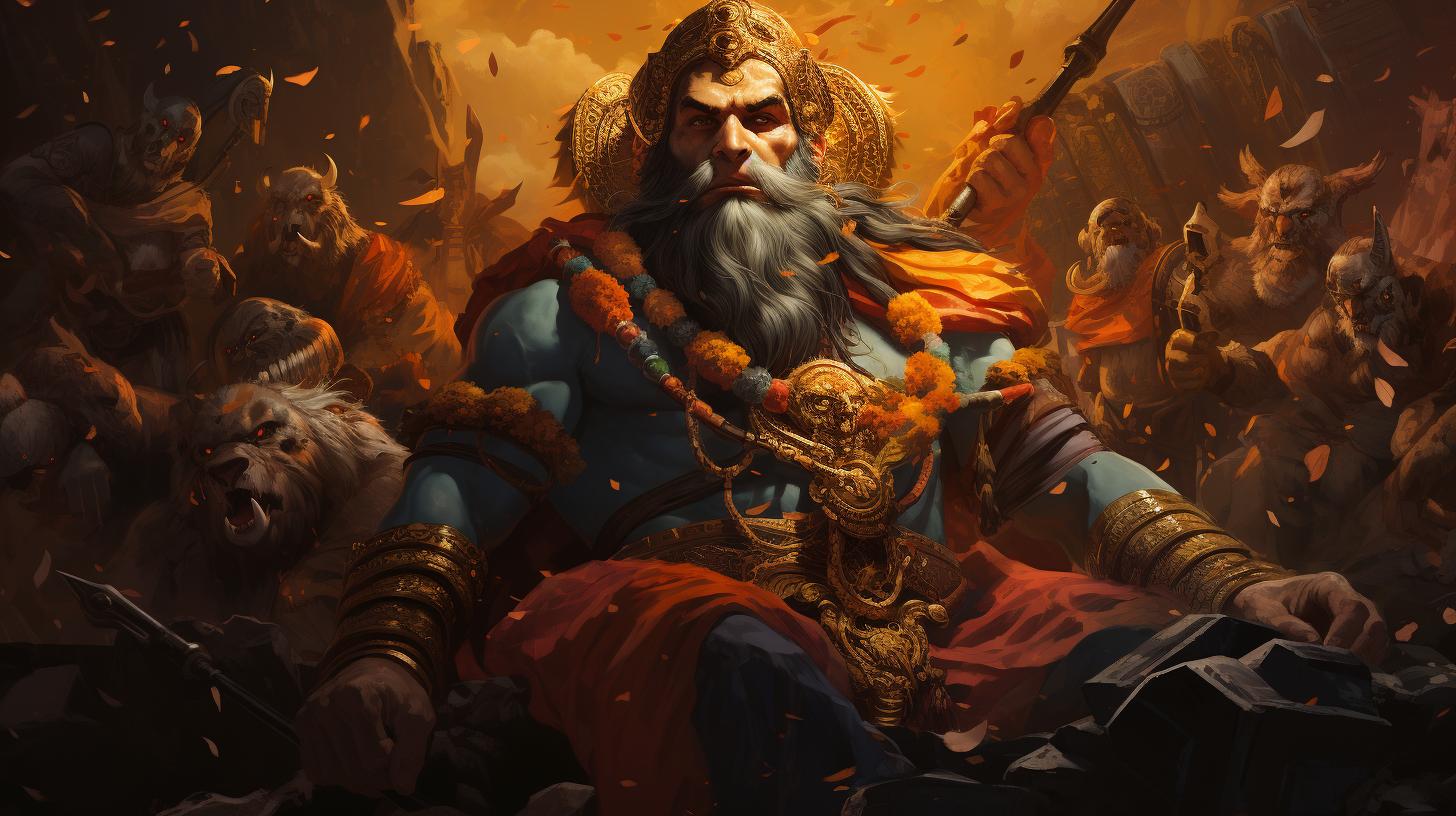Shiva Indian God: Exploring the Divine Deity of Hinduism
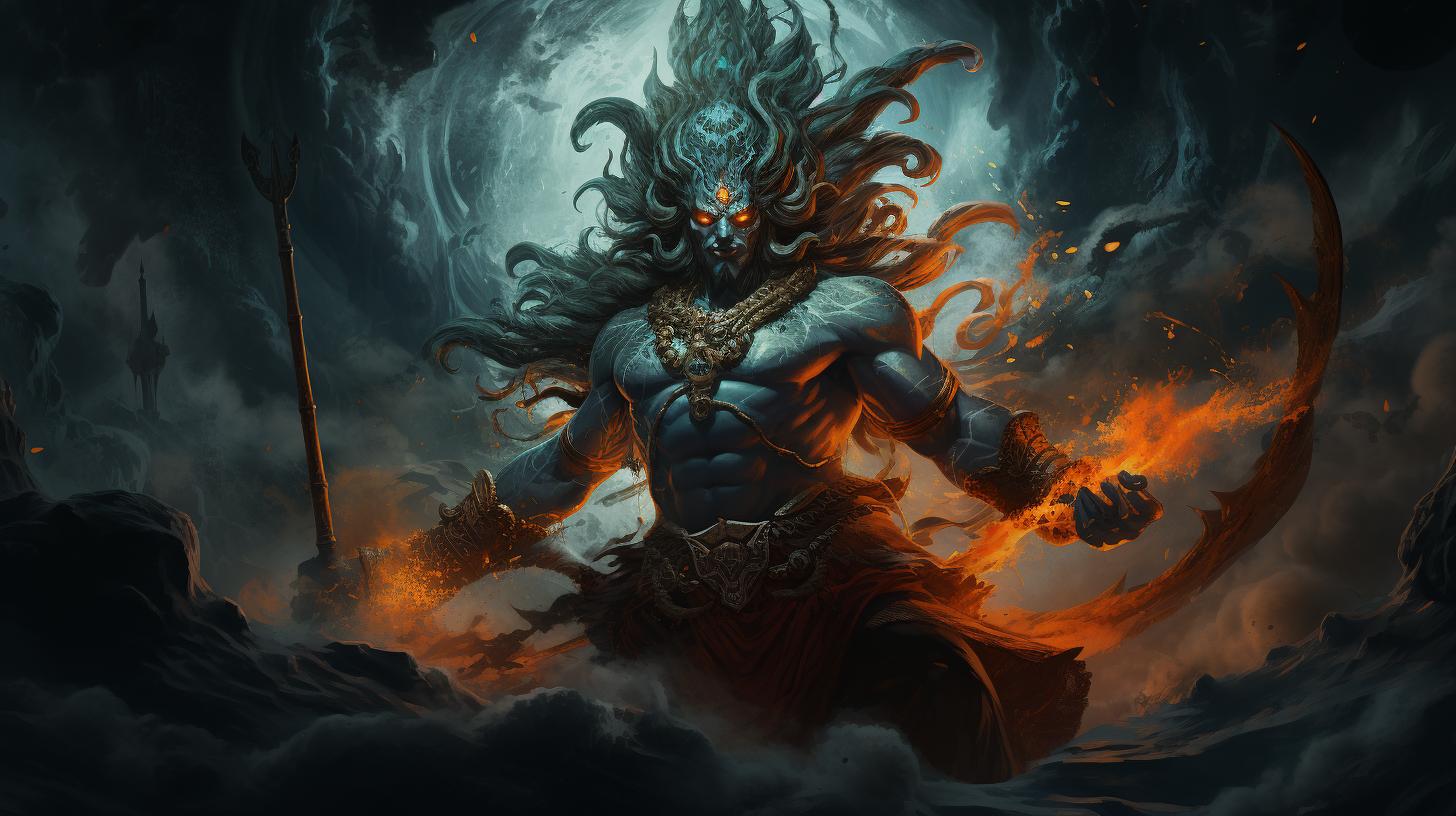
Shiva, the Hindu god of destruction and restoration, holds a significant place in Indian culture and religion. This article explores various aspects of Shiva, including his origins, symbolism in art, and legends like his enchanting dance with Kali. We delve into Shaivism, the popular Hindu sect dedicated to Shiva, and its practices such as asceticism and yoga.
The divine relationships of Shiva, including his consort Parvati and their children Skanda and Ganesh, are also discussed. Join us as we uncover the diverse manifestations and symbolism associated with Shiva, along with celebrations and global influence.
Shiva: The Hindu God of Destruction and Restoration
Shiva, known as the Hindu god of destruction and restoration, holds significant importance in Hinduism. The origins and significance of Shiva in this ancient religion are deeply rooted in mythology and belief.
Depictions and symbolism of Shiva in Indian art and culture further highlight the complexities of his divine persona.
The Origins and Significance of Shiva in Hinduism
Shiva’s origins can be traced back to ancient Vedic texts, where he was initially known as Rudra. Over time, he evolved into the powerful deity we recognize as Shiva. His significance lies in his role as the supreme lord of the Saivite sects in India, embodying seemingly contradictory qualities.
Shiva is both the ultimate destroyer and the benevolent restorer, symbolizing both asceticism and sensual delight.
Depictions and Symbolism of Shiva in Indian Art and Culture
Indian art and culture are adorned with various depictions of Shiva, each carrying deep symbolism. Shiva is often portrayed with a serpent coiled around his arms and neck, representing his mastery over fear and death.
Additionally, his iconic trident symbolizes the Hindu trinity, consisting of Brahma, Vishnu, and Shiva. Shiva’s sacred Rudraksha beads and his enigmatic third eye enhance his divine persona in artistic representations.
The Legend of Shiva’s Dance with Kali: An Intriguing Mythological Tale
It represents the harmonious balance of masculine and feminine energies.
This enchanting tale showcases Shiva’s multifaceted nature and emphasizes his significant role in the cosmic order.
Shaivism: Exploring the Devotion and Practices Surrounding Shiva
In this section, we delve into Shaivism, a popular Hindu sect devoted to the worship of Shiva. Shaivism holds a significant place in the religious landscape of India, with its own unique beliefs, rituals, and practices.
Understanding Shaivism: A Popular Hindu Sect and Its Beliefs
Shaivism is a prominent Hindu sect that venerates Lord Shiva as the ultimate deity. Followers of Shaivism believe in the supreme power of Shiva, who is considered the creator, preserver, and destroyer of the universe.
They perceive Shiva as the all-pervading force and seek spiritual enlightenment by connecting with his divine energy.
Central to Shaivism is the concept of monism, where devotees believe in the oneness of Shiva with the universe.
This belief emphasizes the interconnectedness of all existence and the idea that everything is an embodiment of Shiva’s divine presence.
Asceticism, Yoga, and Renunciation: Pathways to Attain the Nature of Shiva
Shaivites embark on a journey of self-discovery and spiritual growth through ascetic practices, yoga, and renunciation.
By renouncing worldly attachments, they aim to attain the nature of Shiva and embody his qualities.
Many Shaivites engage in rigorous asceticism, practicing self-discipline and control over their physical and mental desires.
Through austerities such as fasting, meditation, and self-denial, they aspire to transcend mundane existence and achieve a deeper understanding of the divine.
Yoga plays a vital role in Shaivism, as it helps seekers connect with Shiva’s divine energy within themselves.
Yogic practices, including asanas (postures), pranayama (breath control), and meditation, provide a pathway to spiritual enlightenment and self-realization.
The Three Horizontal Marks: Symbolizing the Aspects of Shiva in Shaivism
Shaivite practitioners mark their foreheads with three horizontal lines, known as the Tripundra. These lines represent the three fundamental aspects of Shiva: creation (Brahma), preservation (Vishnu), and destruction (Shiva).
The Tripundra serves as a reminder for devotees to balance these forces within themselves and recognize the interconnected nature of the cosmos.
The Tripundra also signifies the devotee’s allegiance to Shaivism and their commitment to the path of self-realization, seeking unity with Shiva.
The symbolic Tripundra marks on their foreheads serve as a constant reminder of their dedication to the path of Shaivism and their quest for spiritual enlightenment.
Shiva’s Consort, Family, and Abode: Exploring the Divine Relationships
Shiva, the powerful Hindu deity, is accompanied by a sacred consort and has a divine family.
Let us delve into the relationships that define Shiva’s personal life and explore his abode in the Himalayas.
Parvati: The Divine Wife of Shiva and Mother of Their Children
At the core of Shiva’s family lies Parvati, his divine consort. Parvati is revered as the epitome of feminine energy and represents love, devotion, and strength. As Shiva’s wife, she completes him and shares an unbreakable bond.
Their cosmic union symbolizes the harmony of masculine and feminine energies in the universe.
Parvati is not only Shiva’s companion but also the mother of their two remarkable children. With her grace and nurturing nature, she has brought Skanda and Ganesh into the world, adding to the divine lineage of Shiva’s family.
Skanda and Ganesh: Intriguing Figures in Shiva’s Family
Skanda, also known as Kartikeya, is the eldest son of Shiva and Parvati. He embodies courage, valor, and leadership. Skanda is often depicted as a warrior riding a peacock and holds a significant role in Hindu mythology, particularly in the battle against evil forces.
In contrast, Ganesh, the beloved elephant-headed deity, is the younger son of Shiva and Parvati. As the remover of obstacles and the lord of wisdom, Ganesh is widely worshipped and revered across India.
His humble and compassionate nature endears him to devotees who seek his blessings for success and prosperity in various endeavors.
Mount Kailash: Shiva and Parvati’s Sacred Abode in the Himalayas
The divine couple, Shiva and Parvati, reside together in their celestial abode known as Mount Kailash in the majestic Himalayas.
This sacred mountain is considered the dwelling place of Shiva and is revered as the center of spiritual energy in Hinduism.
Mount Kailash holds immense significance and attracts devotees and seekers from all over the world.
Pilgrims embark on arduous journeys to catch a glimpse of this revered mountain and seek blessings from Shiva and Parvati.
Shiva’s consort, family, and abode hold great reverence in Hindu mythology and form an integral part of his divine persona.
Understanding these relationships adds depth to the profound symbolism and significance associated with Shiva’s role as the supreme deity.
The Diversity of Shiva’s Manifestations: Iconography and Forms
Shiva, the Hindu god of destruction and restoration, is represented in various forms and iconography, each carrying a distinct symbolism. These manifestations offer profound insights into Shiva’s nature and his role within Hindu mythology and spirituality.
Nataraja: Shiva as the Cosmic Dancer and Symbol of Creation and Destruction
One of the most captivating forms of Shiva is Nataraja, depicted as a cosmic dancer. Nataraja symbolizes the continuous cycle of creation and destruction, with his dance representing the rhythm of the universe.
In this form, Shiva holds a damaru (a small drum) in one hand, symbolizing the cosmic sound that initiated creation. The other hand holds the fire that signifies destruction. His dance, known as the Tandava, signifies the eternal flow of energy and the balance between opposing forces.
Shiva as the Ascetic, Beggar, and Half-Woman Deity
Another intriguing aspect of Shiva’s diversity is his portrayal as an ascetic, often depicted in meditation or deep contemplation. As the ultimate renunciant, Shiva renounces material possessions and embraces a life of detachment, illustrating the path to spiritual liberation.
Additionally, Shiva is sometimes depicted as an eccentric beggar, challenging societal norms and highlighting the impermanence of worldly possessions. Furthermore, Shiva’s Ardhanarisvara form represents the androgynous union of Shiva and Parvati, symbolizing the harmonious balance of masculine and feminine energies.
Ardhanarisvara: The Androgynous Form Uniting Shiva and Parvati
Ardhanarisvara is a unique representation of Shiva, depicting him as half-man and half-woman, signifying the inseparable nature of Shiva and his consort, Parvati. This form reflects the idea of complementary opposites and emphasizes the importance of unity.
Ardhanarisvara symbolizes the union of Purusha (masculine) and Prakriti (feminine), demonstrating the interconnectedness of creation and its underlying cosmic energy.
Lingam, Serpents, Deer, and Weapons: Symbols Associated with Shiva
Various symbols are intricately linked with Shiva, providing further insight into his divine nature. The lingam represents the cosmic generative power of Shiva and is worshipped as a representation of the divine energy.
Serpents, often seen winding around Shiva’s body, signify his mastery over Kundalini energy, representing life force and spiritual awakening. Additionally, Shiva is associated with deer, which symbolize innocence and purity. Furthermore, weapons such as the trident and axe represent Shiva’s power to destroy negativity and ignorance.
Celebrating Shiva: Mahashivaratri and Other Festivals Associated with the God
Mahashivaratri: Honoring Shiva’s Great Night with Fasting and Devotion
Mahashivaratri, which translates to “The Great Night of Shiva,” is a significant Hindu festival celebrated with immense devotion and fasting. This annual observance revolves around revering Lord Shiva and seeking his blessings for spiritual growth and enlightenment.
Devotees prepare for Mahashivaratri by observing strict fasting throughout the day. They abstain from consuming food and water, dedicating themselves to prayers and meditation. The night comes alive with captivating rituals and elaborate ceremonies held in temples dedicated to Lord Shiva.
During Mahashivaratri, devotees offer fresh flowers, fruits, and leaves to Shiva’s idols. They chant sacred hymns and perform aarti, waving incense sticks and camphor flames in front of the deity.
The atmosphere reverberates with the sound of devotional songs and recitations of Shiva’s mantras.
Throughout the night, devotees stay awake, engaging in spiritual practices and collective prayers. Some stay vigil, chanting sacred texts like the Shiva Purana or engaging in meditation to immerse themselves in Shiva’s divine energy.
Mahashivaratri carries immense spiritual significance as it symbolizes the union of Shiva and Shakti, the divine feminine energy. It is believed that on this night, the cosmic energy flows abundantly, bestowing blessings upon those who worship Shiva with pure intent and devotion.
Ganga’s Entanglement: The Story Behind Shiva’s Tangled Hair
Among the fascinating legends associated with Shiva is the tale of how the sacred river Ganga became entangled in his matted hair. According to Hindu mythology, Ganga descended from heaven to cleanse the sins of humanity, and her forceful flow threatened to destroy the earth.
To prevent this catastrophe, Lord Shiva captured Ganga’s powerful descent in his hair, allowing her to gently flow and bless the land. This act reflects Shiva’s compassion and role as a savior for the world.
The entangled hair of Shiva, known as Jata or Jatadhari, has become an iconic representation in art and culture. It symbolizes the divine connection between Shiva and the holy river, representing his ability to contain and control immense cosmic forces.
The story serves as a reminder of Shiva’s power, mercy, and eternal role as the protector and nurturer of creation. It underscores the profound relationship between nature, spirituality, and the divine.
- Strict fasting and abstinence from food and water
- Offering fresh flowers, fruits, and leaves to Shiva’s idols
- Chanting sacred hymns and performing aarti
- Staying awake throughout the night, engaging in collective prayers and spiritual practices
In summary, Mahashivaratri, a night of fasting and devotion, honors Shiva through:
Additionally, the story of Ganga’s entanglement in Shiva’s hair showcases his role as a savior and protector, highlighting the divine connection between Shiva and the sacred river.
Exploring Shiva’s Influence: Cultural Impact and Devotion Worldwide
Shiva, the revered Hindu god, extends his influence far beyond the borders of India. His spiritual significance and devotees span across the globe, demonstrating the widespread impact of his worship. Let’s delve into the various aspects that highlight Shiva’s global reach, presence in art, literature, film, and contemporary practices.
Shiva’s Global Reach: Devotion and Worship Beyond India
- Devotees worldwide have embraced the profound teachings of Shiva, finding solace and spiritual connection through his worship.
- From North America to Europe, South America to Australia, and beyond, temples dedicated to Shiva have emerged, serving as centers for devotion and community.
- International Shiva festivals and gatherings bring together people from diverse backgrounds, fostering cultural exchange and a shared appreciation for the god’s divine presence.
Shiva in Art, Literature, and Film: Depictions and References in Popular Media
- Artists and creators worldwide have been inspired by Shiva’s captivating imagery, influencing various forms of artistic expression.
- His iconic dance, cosmic attributes, and powerful symbolism often find their way into paintings, sculptures, and installations, reflecting the universal appeal of his divine persona.
- Literature and poetry from different corners of the world have drawn inspiration from Shiva’s mythology, employing his tales and principles to explore profound themes of life, death, and spirituality.
- In the realm of film, both within India and internationally, Shiva’s tales have been brought to the silver screen, captivating audiences and showcasing the god’s enduring allure.
Contemporary Practices and the Continuity of Shiva’s Worship in the Modern World
- Despite the changing times, devotees continue to practice and uphold traditional rituals and ceremonies dedicated to Shiva.
- Contemporary spiritual communities, yoga studios, and meditation centers incorporate Shiva’s teachings and principles, offering guidance for spiritual seekers worldwide.
- His timeless message of inner transformation, renunciation of material desires, and seeking ultimate liberation resonates with individuals seeking deeper meaning in their lives.
- Technological advancements have facilitated online platforms and virtual communities, connecting Shiva devotees across the world, fostering a sense of unity and collective worship.
In conclusion, Shiva’s influence transcends borders, cultures, and time, making a profound impact on devotees and artists globally.
The worship, art, literature, and modern practices associated with Shiva attest to the enduring significance of his universal message of spiritual awakening and universal consciousness.
..











